Japanese dessert recipes
To the chagrin of our doctors, many of us have a sweet tooth, whether we’d like to admit it or not. We also have a particularly soft spot for pretty little desserts – they’re as satisfying to the eyes as they are to our tummies. Japan has plenty of these delightful treats, from traditional desserts known as wagashi to Western ones such as pancakes and parfait, but with a Japanese twist.
Unless you live in Japan, visiting a Japanese dessert shop won’t be possible in the near future. But if your dessert cravings simply can’t wait that long, pick up a mixing bowl and try recreating these 10 simple Japanese desserts, guaranteed to be both delicious and easily made at home.
1. Mochi
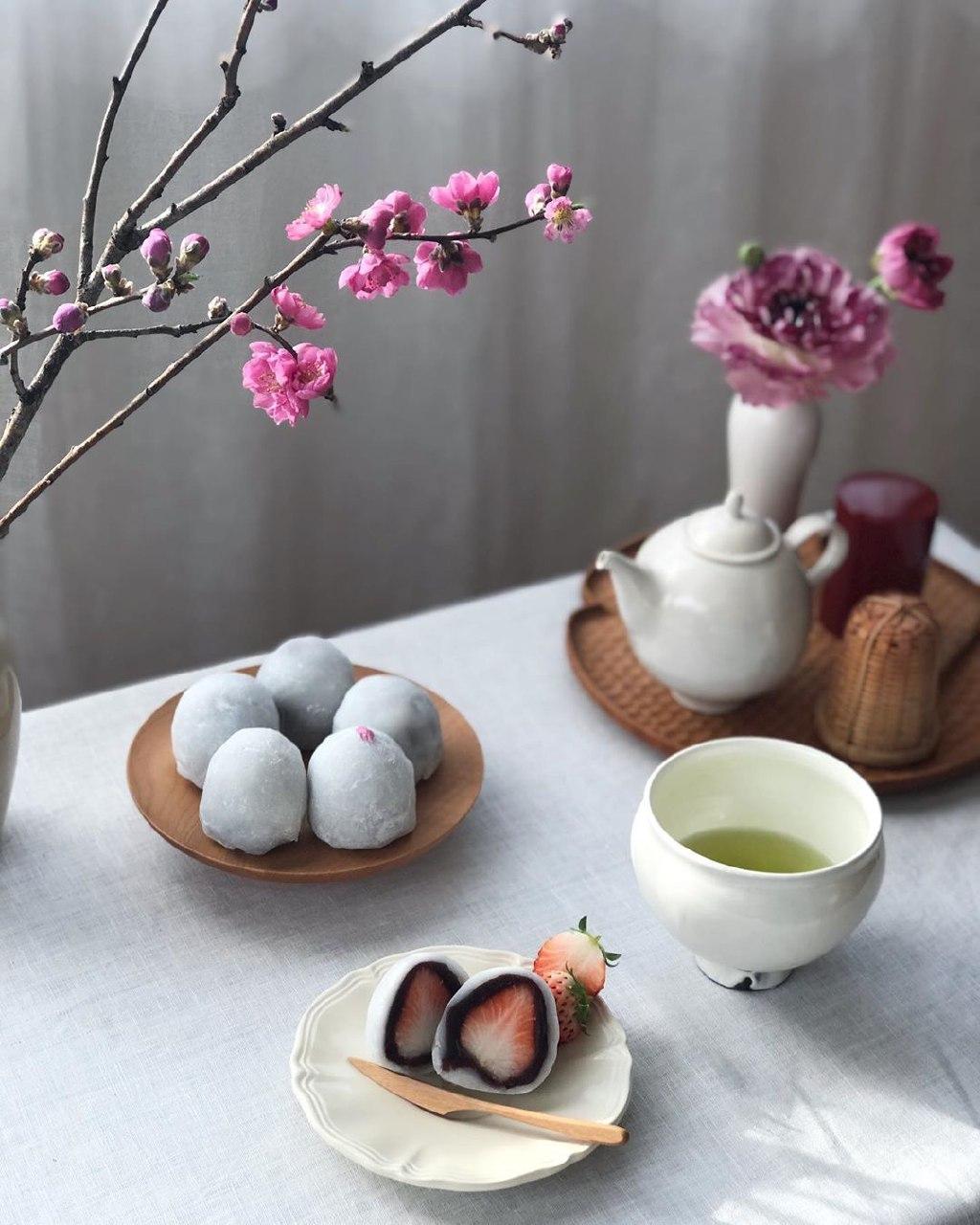
Image credit: @mon.origine
Mochi is a well-loved Japanese sweet treat – it’s a ball of sticky, chewy goodness. It’s traditionally made and consumed for the new year, but that shouldn’t stop you from having it whenever you like.
This Japanese glutinous rice cake is delicious on its own, but it can also be used with a variety of fillings that’ll add that extra oomph.
Serves 4
Ingredients:
- 1 cup of mochiko rice flour
- 2 cups of sugar
- ¾ cup of water
- Cornstarch for dusting the dough
Steps:
- Mix the flour and water together until it reaches a soft dough-like consistency. Slowly add more water if need be.
- Steam the mochi for about 20 minutes.
- Transfer the mochi to a pot. Over low to medium heat, add in a third of the sugar and mix it into the mochi until it’s completely dissolved. Add another third and do the same until all of the sugar is dissolved into the mochi. While this may seem like a lot of sugar, it’s key to keeping the mochi soft and chewy. You can reduce the amount of sugar if you are going to serve it right away.
- Once the mochiko is soft, sticky, and shiny, transfer it to a tray layered with cornstarch. Do be careful as the dough is very hot. You can dust your hands with some cornstarch to help prevent burns.
- The mochi is now ready to be shaped and served.
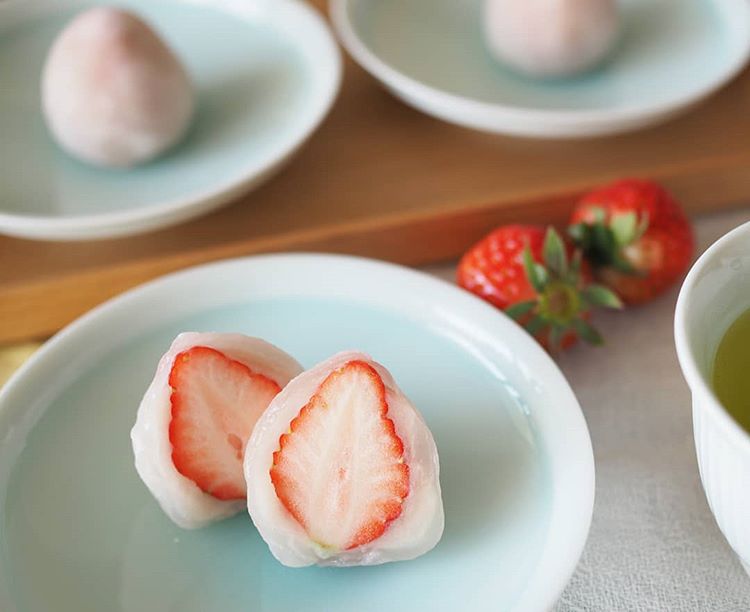
Image credit: @horizaki_oyatsu
You can cut the mochi into small pieces, or wrap anko (餡子) with it to make daifuku mochi (大福餅). Anko is the sweet Japanese red bean paste that’s found in other Japanese sweets such as dorayaki and taiyaki, and you can purchase canned versions of it or make it fresh yourself.
Another popular way to enjoy mochi is to wrap ice cream with it to make mochi ice cream. Also, try wrapping strawberries with mochi for a fruity twist.
Check out the original recipe here:
2. Japanese Cheesecake
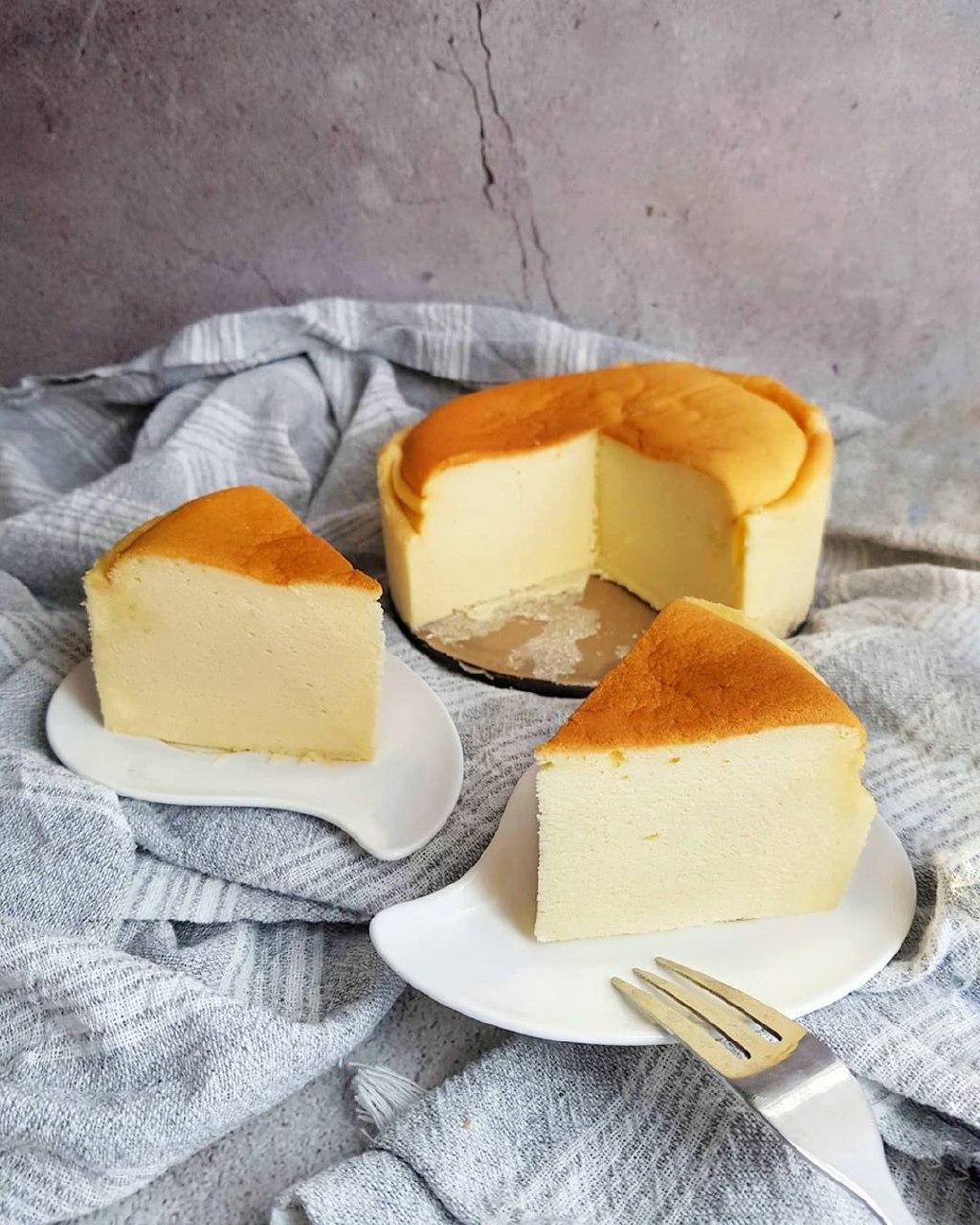
Image credit: @foodistisch
Japanese cheesecakes are renowned for their fluffy and cotton-like texture. It’s like a cross between an airy soufflé and the cheesy-goodness of a New York cheesecake.
The secret behind its jiggly texture is in the egg whites – don’t use too much pressure when you incorporate them into the cake batter as it’ll deflate it. Plus, the cheesecake is baked in a bain-marie, or water bath, for gentle heating in the oven. It also helps to retain moisture, keeping it light and fluffy.
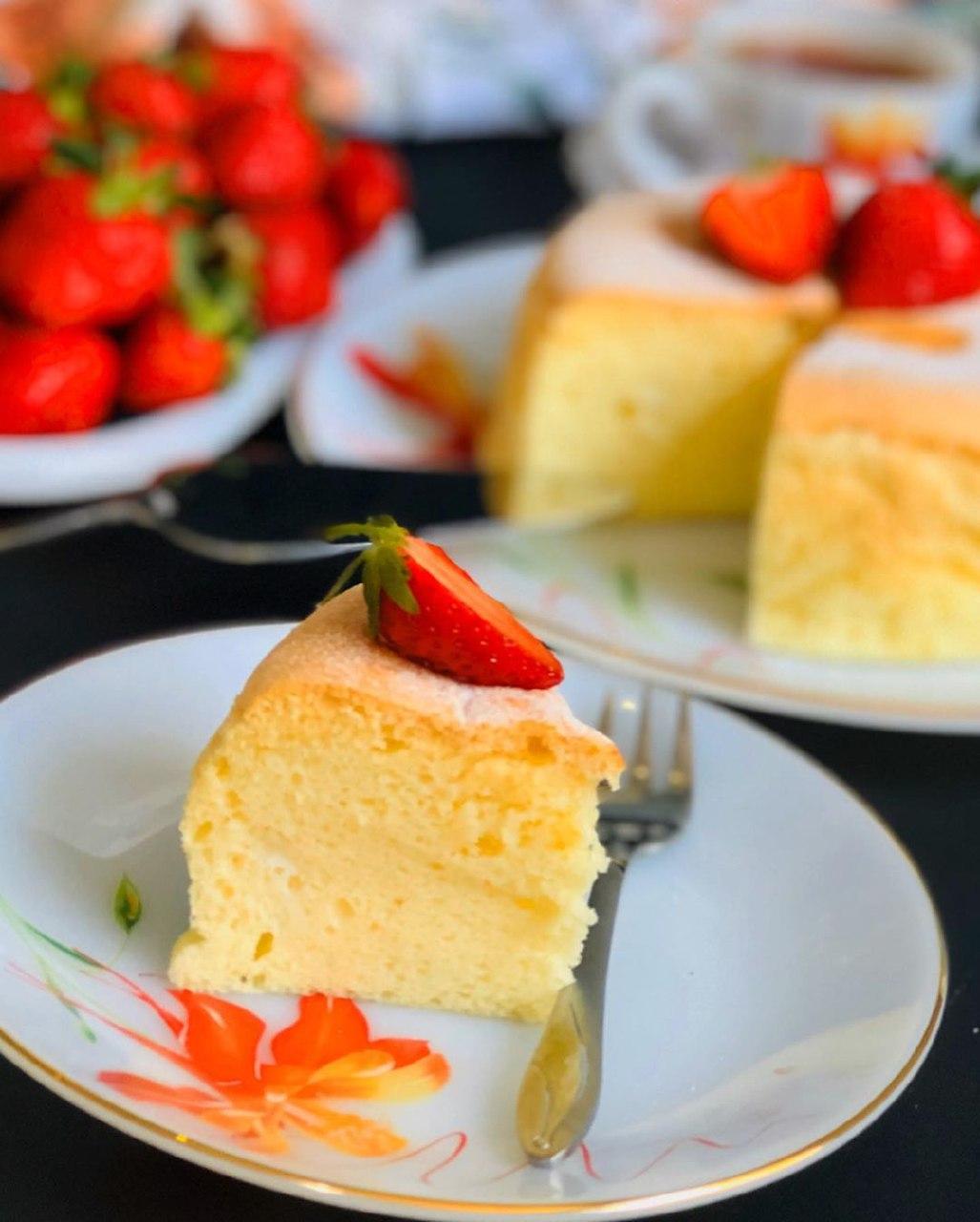
Image credit: @honeycake.cookie
Serves 4
Ingredients:
- 100g butter
- 100g cream cheese
- 130ml (½ cup) milk
- 8 egg yolks
- 60g flour
- 60g cornstarch
- 13 large egg whites
- 130g sugar
Steps:
- Mix the butter, cream cheese, and milk into a pot and cook it over low heat. Continue to stir until the mixture is smooth and thick.
- Whisk the egg yolks together in a bowl and gradually whisk in the mixture.
- Sift the flour and cornstarch over the batter and stir until it’s smooth and shiny.
- In a separate bowl, whisk the egg whites together until soft peaks form. Then, add sugar to form a meringue with somewhat-stiff peaks. We recommend gradually pouring the sugar in 3 parts to ensure that all of the sugar is dissolved into the meringue.
- Gradually fold the meringue into the batter, quarter-parts at a time. Be gentle as the fluffiness of the cheesecake depends on the amount of air inside the mixture, so you don’t want to use too much pressure.
- Transfer the mixture into a round greased baking pan lined with parchment paper. Tap the pan against the table to remove any air bubbles inside.
- Place the baking pan over a wider baking dish and fill the outer tray with hot water until it’s about 2cm high.
- Bake the cheesecake in a preheated oven for 25 minutes at 160℃, then reduce the heat to 140℃ and bake it for another 55 minutes.
- Once the cheesecake is baked, carefully invert the cake onto your hand and remove it from the baking pan. While you can invert it onto a plate, this will cause the cake to deflate even more.
- Serve the cake with a layer of powdered sugar and freshly sliced fruits of your choice.
Check out the original recipe here:
3. Mitarashi Dango
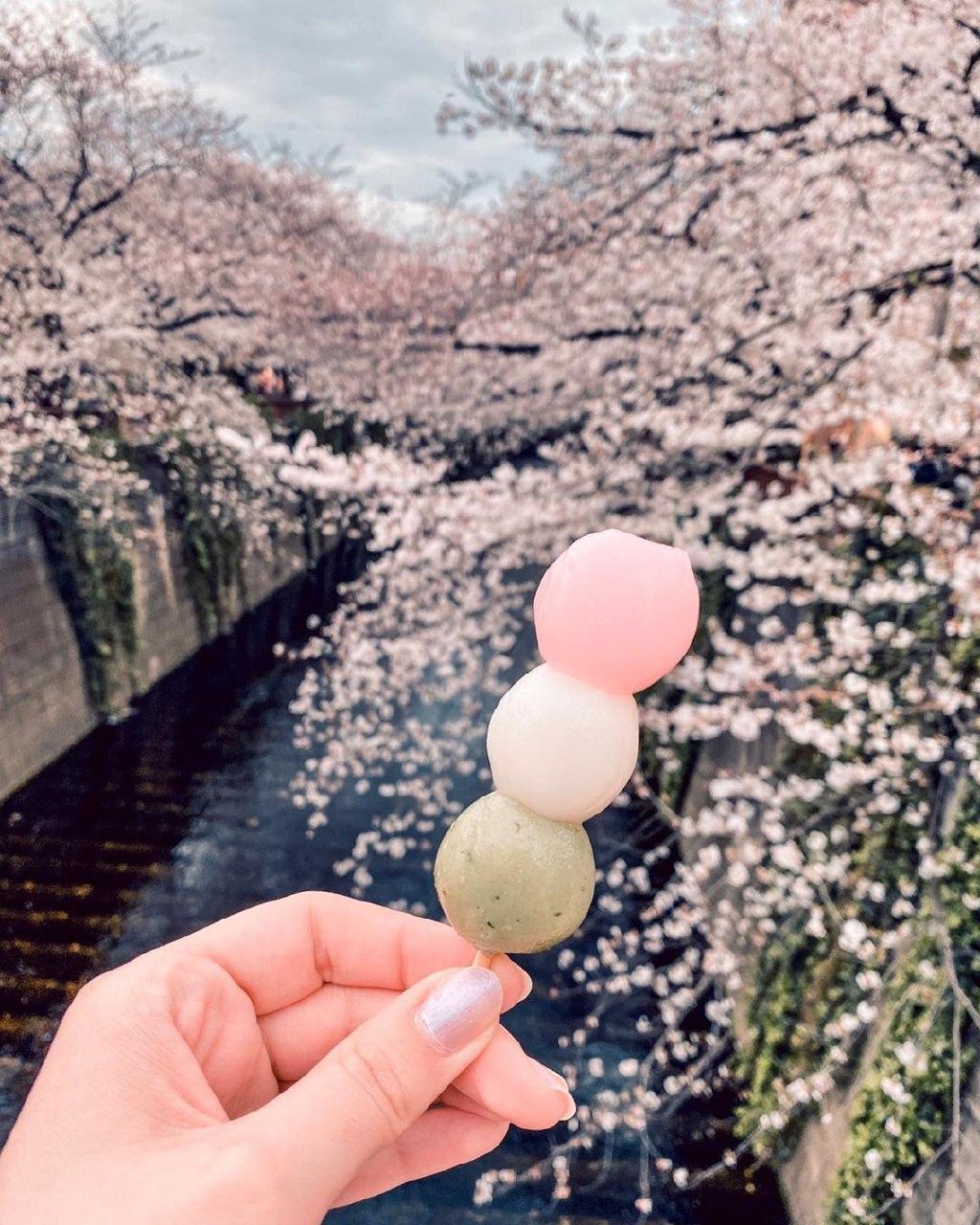
Image credit: @ola.olej
Mitarashi dango (御手洗団子) is an iconic Japanese sweet, so much so that it has appeared in numerous TV and anime series – there’s even a dango shop in the Konohagakure Village in Naruto. Its round shape, bamboo stick skewer, and syrup-laden appearance makes it instantly recognisable.
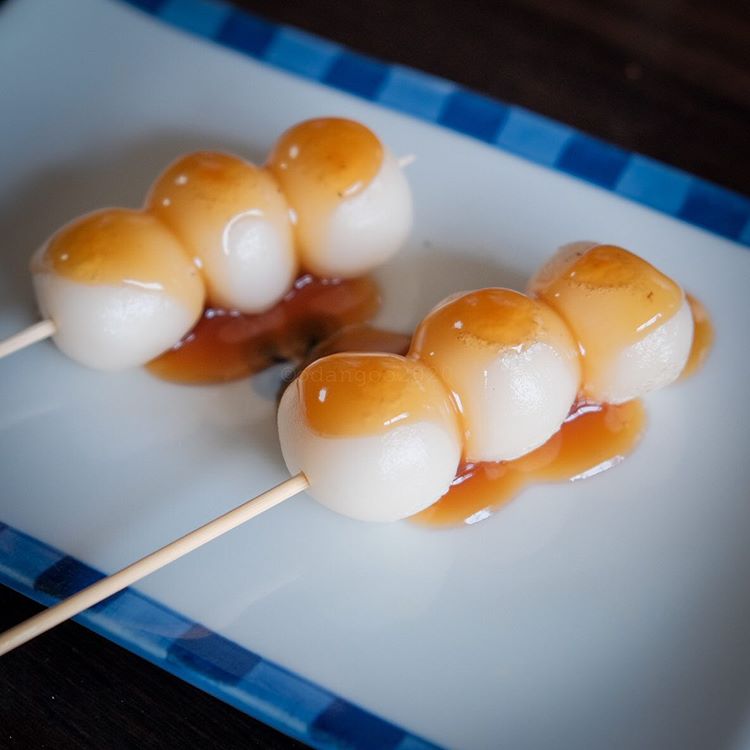
Image credit: @odangoo_2020
This sweet rice dumpling is believed to have originated from a tea house in Kyoto and named after the bubbles of the mitarashi, or purifying water, of the Shimogamo Shrine. Today, it’s found in supermarkets and speciality shops all over Japan.
Serves 2
Ingredients:
Dango (rice balls)
- 100g Shiratamako (lumpy glutinous rice flour)
- 150g Kinugoshi-tofu (silken Tofu)
- 1 tsp sugar
Mitarashi sauce (sweet and savoury sauce)
- 50ml water
- 1 tbsp soy sauce
- 1 tbsp sugar
- ½ tbsp katakuriko (potato starch)
Anko (red bean paste)
- Tsubu-an (a type of sweet azuki red bean paste with skin)
Steps:
Dango
- Mix the ingredients together and knead to form a dough.
- Adjust the texture by adding more shiratamako or water, until the texture of the dough is like your earlobe.
- Divide the dough into 12 parts.
- Roll each part of the dough into a ping-pong ball-sized dango.
- Drop the dango into a pot of boiling water. The dango will float after a minute or so. After it begins to float, let it boil for another minute.
- Remove the dango from boiling water and submerge it into cold water. After a minute, drain it well.
- Put 3 to 5 dango onto a skewer each.
- Pan-fry the dango until the sides are lightly charred.
Mitarashi sauce
- Mix the ingredients together in a pot.
- Cook over low heat and stir constantly until the sauce thickens to a syrupy consistency.
- For extra sweetness, you can add 2 tbsp of mirin (sweet cooking rice wine).
Finally, brush the mitarashi sauce onto the dango and top it off with anko. We recommend using tsubu-an as it has a chunky texture, which goes well with the gooey mouthfeel of the dango.
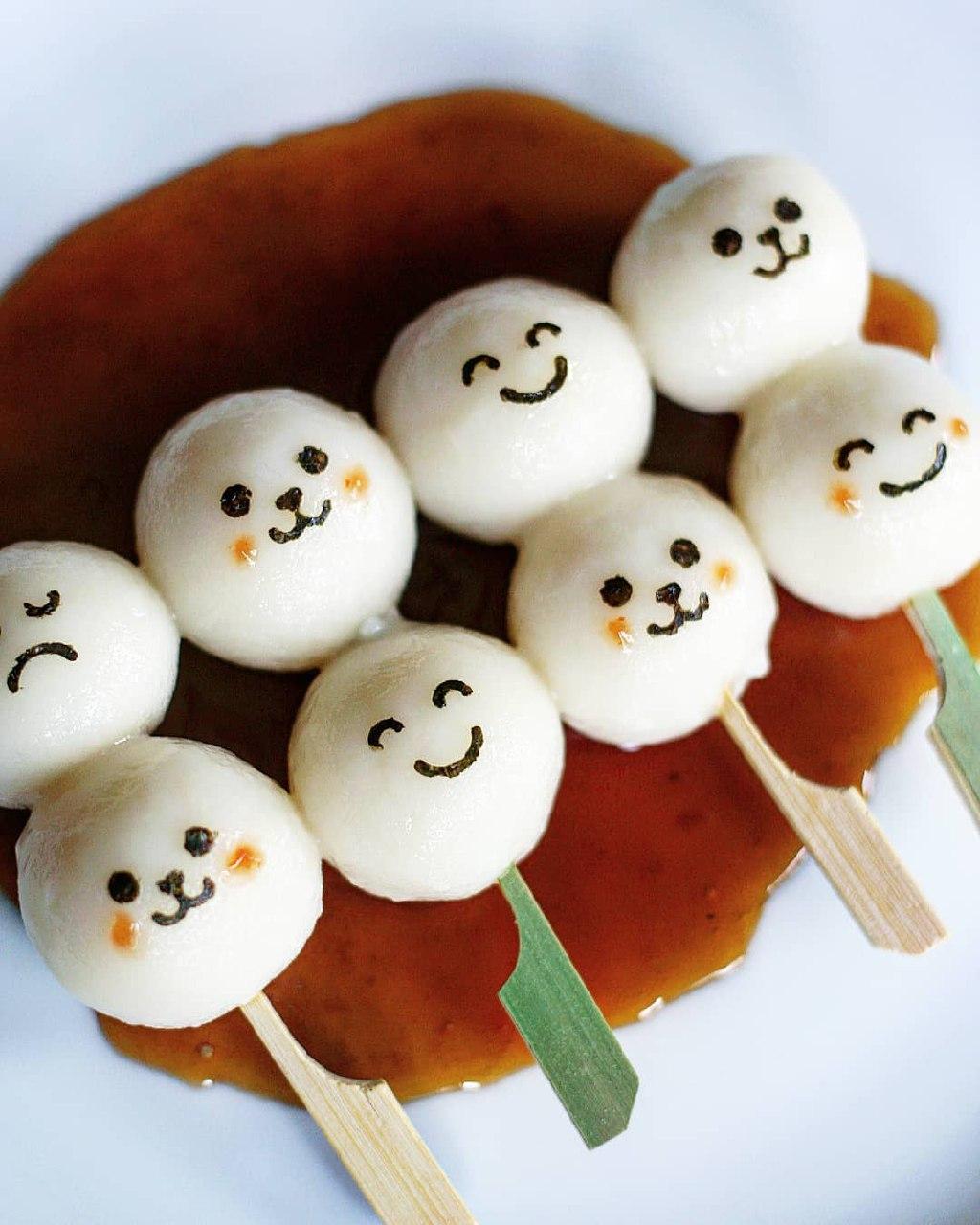
Image credit: @t.k.anna
This deliciously sweet and savoury snack tastes best when you pair it with a cup of hot green tea.
Check out the original recipe here:
4. Anmitsu
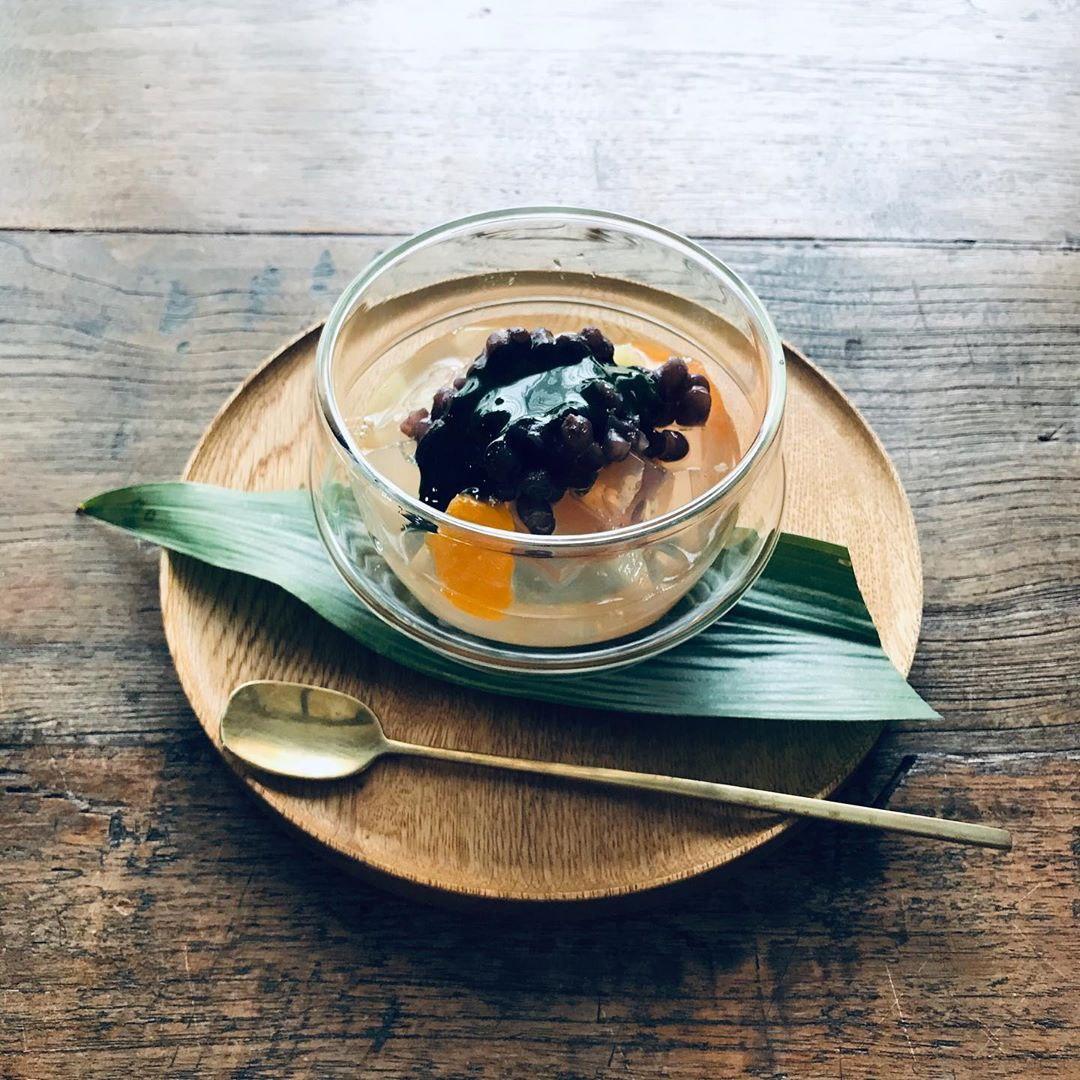
Image credit: @emichikobunny
Anmitsu (あんみつ) is a traditional chilled dessert from Japan that’s said to have been around since the Meiji Era. It’s usually enjoyed in the summer, but can also be enjoyed year-round.
Its special ingredients are the kanten (agar-agar jelly), mochi, anko, fruits, ice cream, and the kuromitsu black sugar sauce that’s draped over the dish. It’s a fun and delicious treat, and has made its way into the pilot episode of the Netflix series Kantaro: The Sweet Tooth Salaryman – a hilarious chronicle of a Japanese salesman trying out the dessert shops in Tokyo.
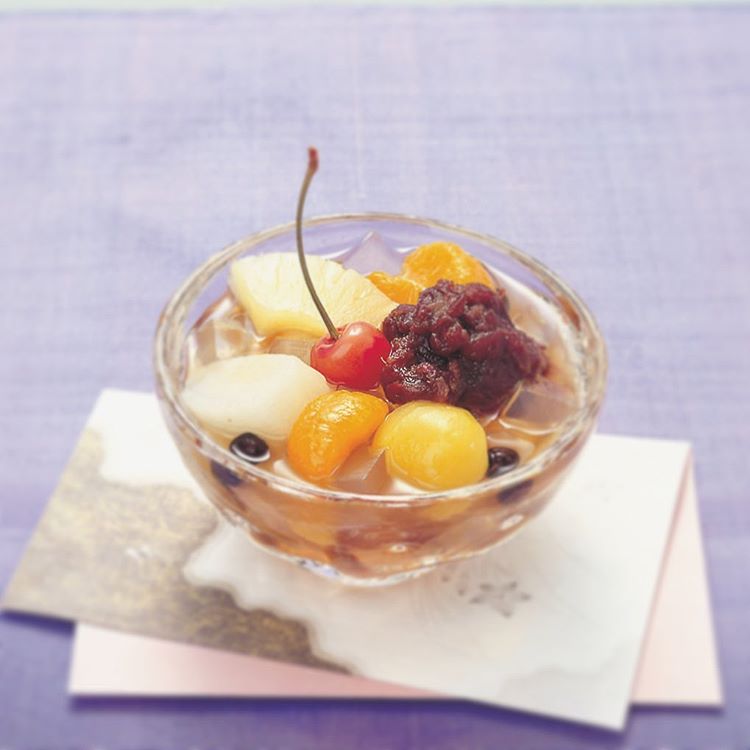
Image credit: @kaniya_honmono_oisisa
Serves 1
Ingredients:
Agar-agar jelly
- 4g agar-agar powder (powdered kanten)
- 2 cups (500ml) water
- 2 tbsp sugar (optional)
Shiratama dango
If you’re using mochiko rice flour:
- ⅓ cup (55g) mochiko
- 2½ tbsp water
- ½ tsp sugar
If you’re using shiratamako rice flour:
- ⅓ cup (42g) shiratamako
- 3 tbsp water
- ½ tsp sugar
Toppings
- 6 tbsp of anko
- 6 scoops of vanilla or green tea ice cream
- Sliced fresh fruits (kiwi, strawberries, bananas)
- Kuromitsu (black sugar syrup)
Steps:
- Add water and agar-agar powder to a pot and bring it to a boil. Then, add sugar and let it simmer over low heat for 2 minutes. Stir well.
- Pour the mixture into a baking dish and let it cool.
- In the meantime, prepare the shiratama dango. Mix the ingredients together and knead them into small dumplings.
- Cook the shiratama dango in a pot of boiling water. After they float, let them boil for 2 more minutes before chilling them in an ice bath.
- Once the dumplings are done, cut the agar-agar jelly into ½ inch cubes. Transfer them into a bowl to form the anmitsu base.
- Top the dessert off with fresh fruits, shiratama dango, anko, ice cream, and a generous amount of kuromitsu syrup.
Check out the original recipe:
5. Parfait
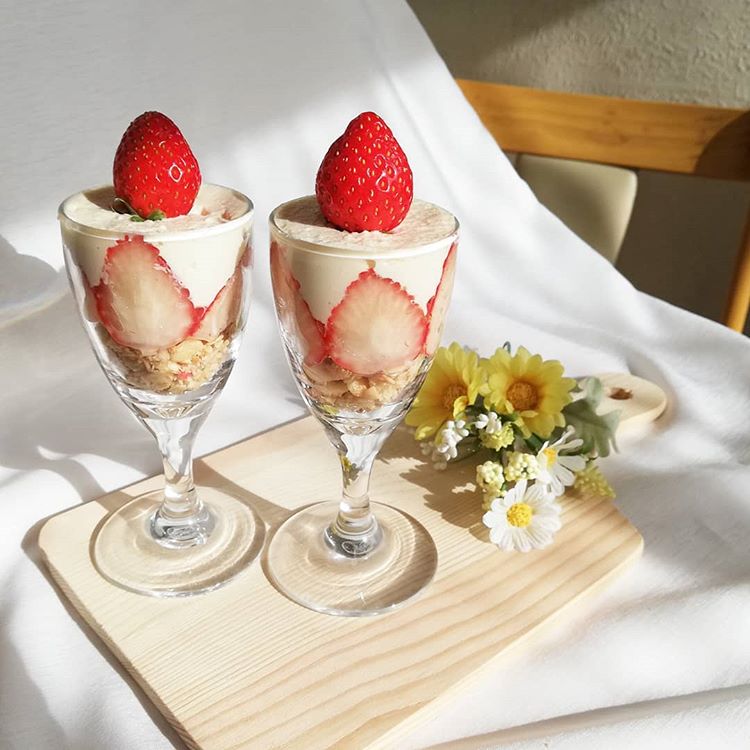
Image credit: @chihiro_cafe.sweets
The Japanese take on the classic parfait is more similar to a Western sundae – it uses ice cream rather than yoghurt, and is closer in taste to the American version, rather than the French. Today, parfait can be enjoyed in dessert shops all over Japan, with distinctly Japanese ingredients – from shiratama dango and anko, to fresh fruits such as strawberries and peaches from the Okayama Prefecture.
The Japanese parfait is best enjoyed in a tall sundae glass that lets you see the pretty layers of the dessert. If you don’t have one, you can also use a bowl with a wide-opening.
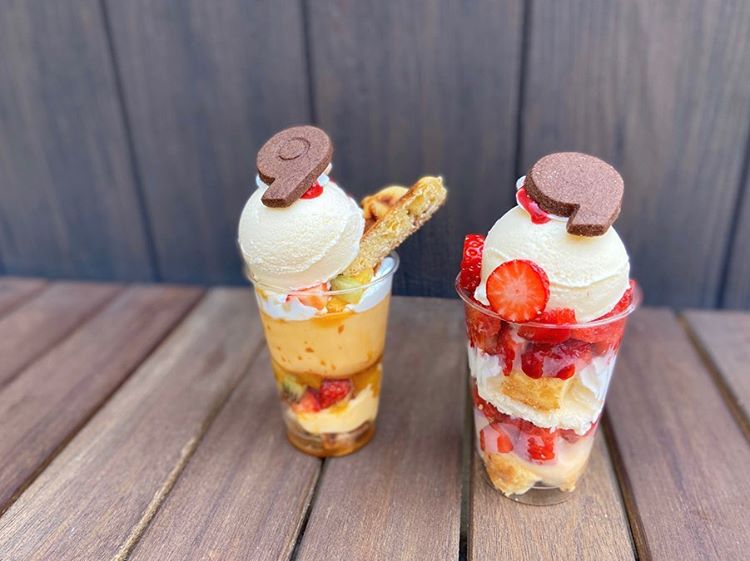
Image credit: @promises_woven
Serves 1
Ingredients:
- 480ml heavy cream
- 3 tbsp sugar
- Strawberries
- Canned yellow peach
- Apple
- Honeydew melon
- Banana
- Kiwi
- Orange
- Cherries
- Corn flakes or granola
- Ice cream of any flavour
- Pocky of any flavour
- Sponge cake
Steps:
- Whip heavy cream and sugar to form soft peaks. Keep it refrigerated until needed.
- Cut strawberries and peaches into very small pieces. Set aside a few whole strawberries for garnishing.
- Tear the sponge cake into 1-inch squares.
- Cut the rest of the fruits into the sizes appropriate for your serving dish or parfait glass.
- In a parfait glass or ice cream dish, add chopped strawberries, corn flakes, ice cream, peaches, and sponge cake pieces. Do this in layers, with whipped cream to fill up the spaces between the layers.
- Top the parfait off with a scoop of ice cream. Garnish the dessert with fruits around the ice cream. Finally, pipe whipped cream and add a cherry on top of the ice cream.
Check out the original recipe here:
6. Raindrop Cake (Mizu Shingen Mochi)
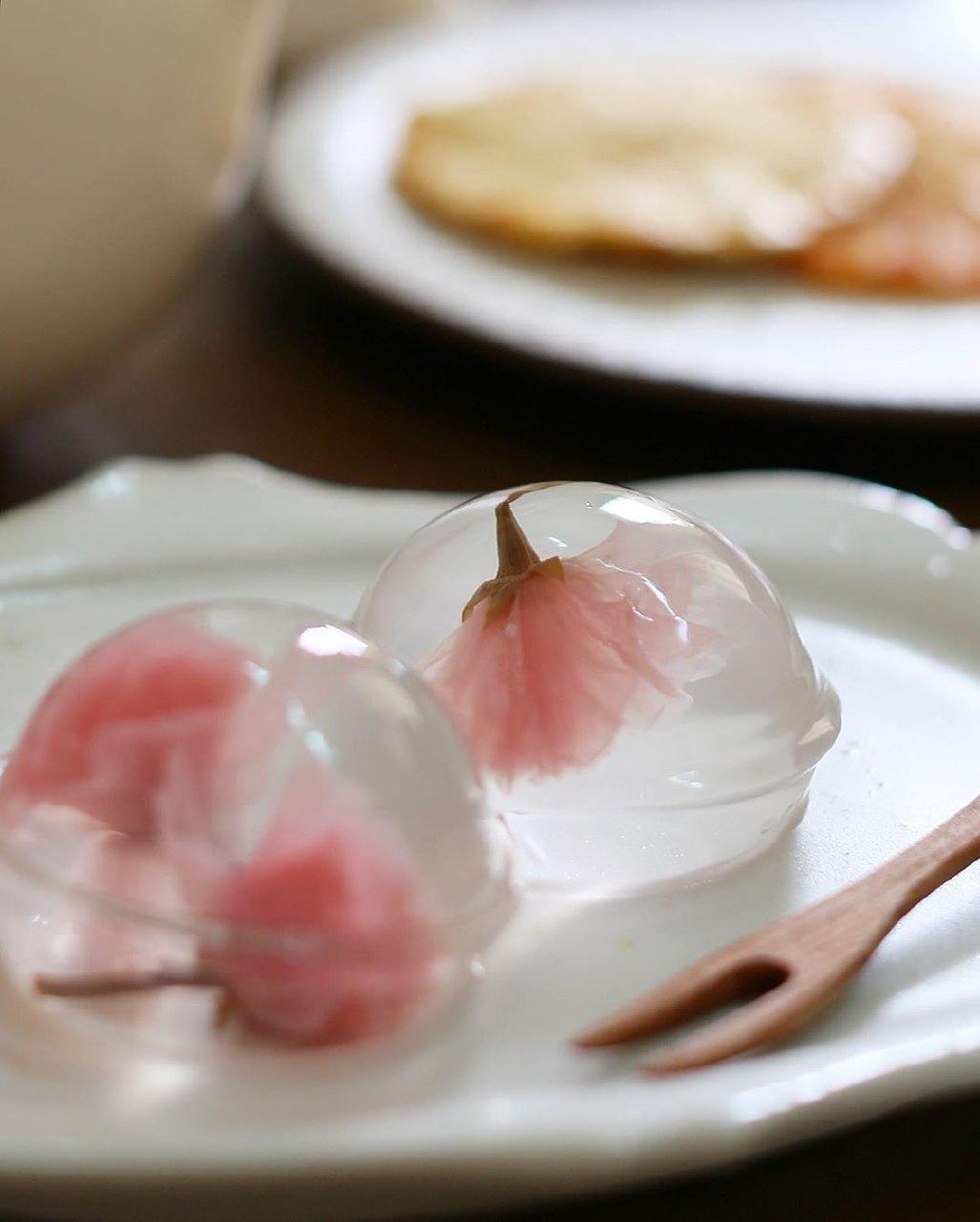
Image credit: @eve58_liang
Mizu shingen mochi (水信玄餅), better known as the raindrop cake, is an agar-agar jelly that looks like a large ball of water. It’s pretty, but because it’s mostly made of water, it doesn’t taste like much. It’s typically paired with kuromitsu and kinako, a type of powdered roasted soybean, but you can use any topping you like.
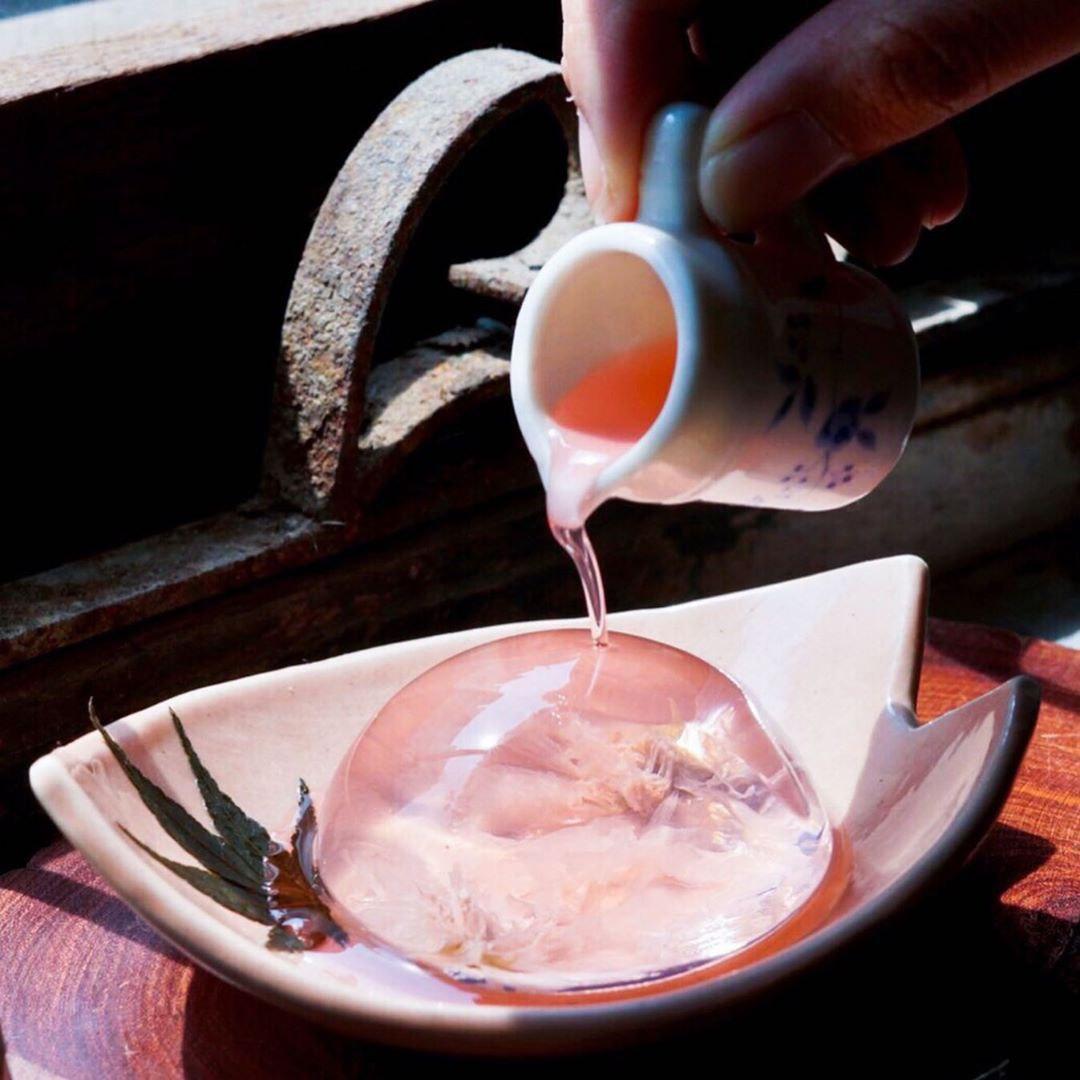
Image credit: @igpppppppppp
The main ingredient of mizu shingen mochi is water. To get the dessert to be as clear as possible, we recommend using bottled mineral water for the recipe. It also helps to have an ice ball mould. Otherwise, a bowl works too.
Serves 1
Ingredients:
- 8g agar-agar powder
- 10g granulated sugar
- 250ml water
- Kuromitsu (Black sugar syrup)
- 10g cherry blossoms (optional)
- Kinako (Roasted soybean powder, optional)
- Ground peanut powder (optional)
Steps:
- Mix 8g of agar-agar powder and 10g of sugar together before pouring it into a pot of boiling water. Begin with high heat to let the mixture dissolve, but be careful not to let the mixture boil over.
- Lower the heat and let the liquid boil for another 2 minutes.
- Chill the liquid by submerging it in an ice bath for 3 minutes.
- Pour the agar-agar mixture into an ice ball tray. Add cherry blossoms into the tray for an extra-beautiful dessert.
- Refrigerate the tray for an hour.
- Serve the raindrop cake with a generous amount of kuromitsu syrup and kinako on the side.
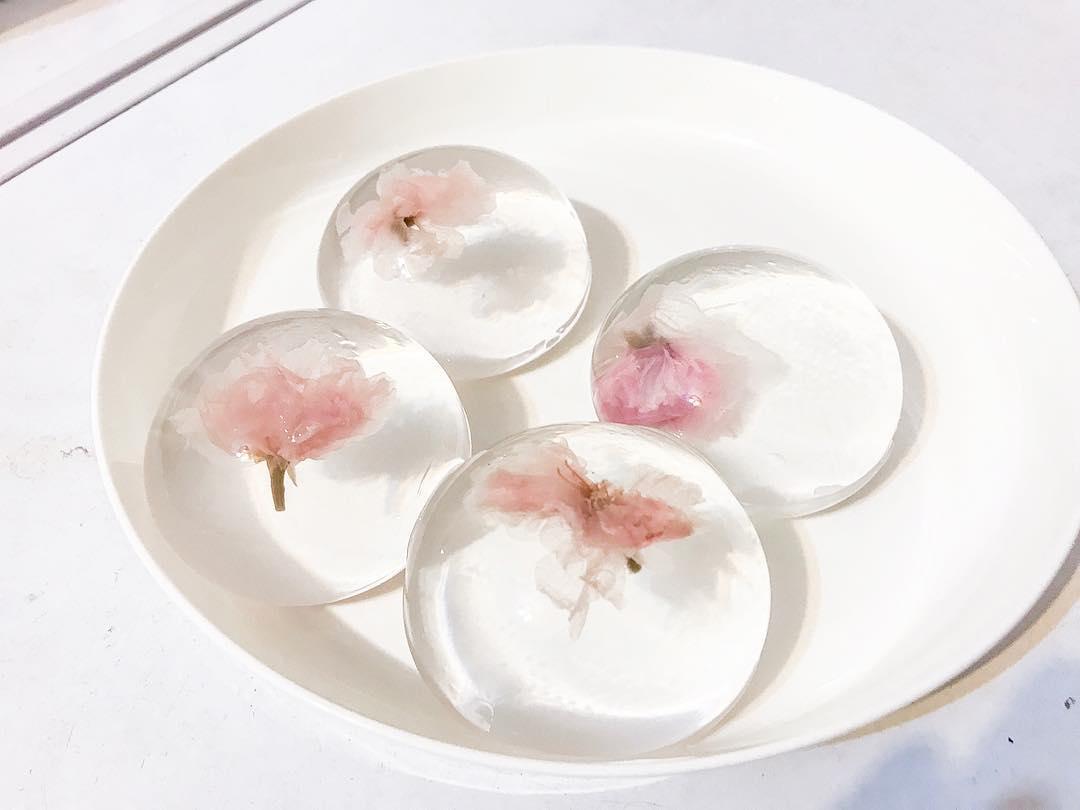
Image credit: @maggieppp0118
Don’t be disheartened if you don’t get it on the first try. Measurements are important for this recipe, and it’ll take a few tries to get the right jiggly and melty texture. Do consume the raindrop cake within 30 minutes, before it turns back into a pool of water.
Check out the original recipe here:
7. Fluffy Soufflé Pancakes
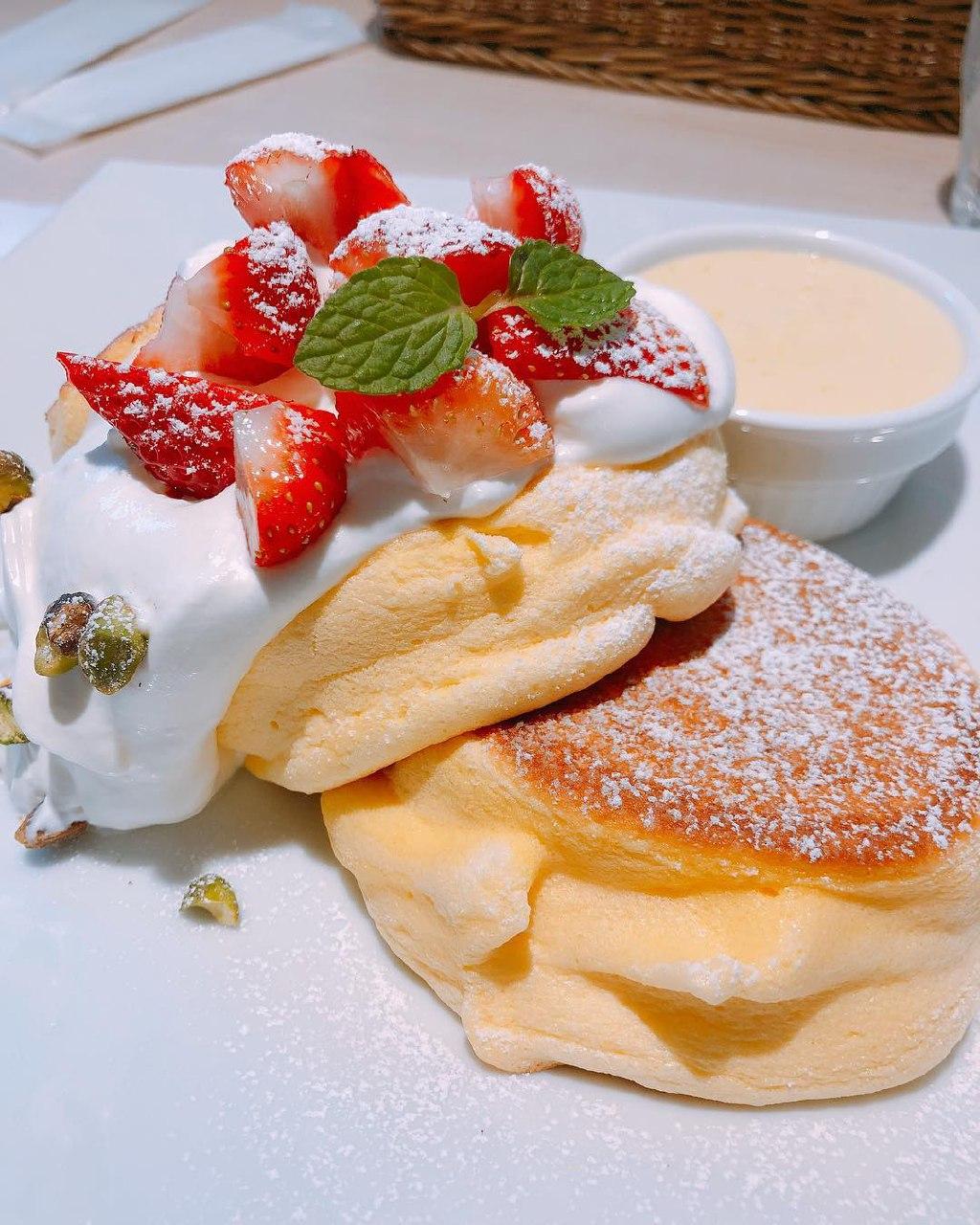
Image credit: @ginakerrrrr
The Japanese are masters at adopting food from different cultures and adding their own twist to it – ramen and Japanese curry are perfect examples of their gastronomic reinventions. Pancakes are no different, too. Japan created a fluffy cross between soufflés and pancakes that took the world by storm a few years ago.
These soufflé pancakes are light, airy, and known to deflate after a while. The secret to its fluffy texture is in the meringue – be careful not to overbeat it as the air bubbles inside are key to the pancakes’ cotton-like goodness.
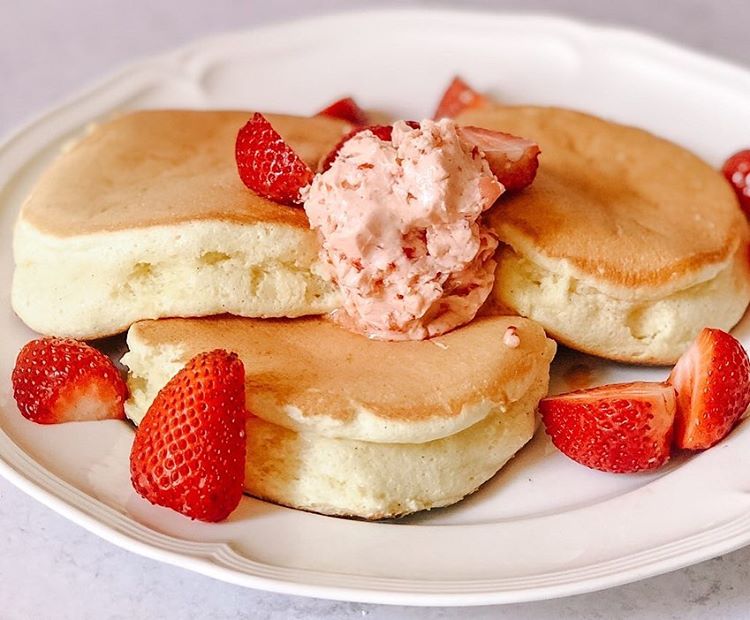
Image credit: @ninaeatseverything
Serves 1-3
Ingredients:
- 125g all-purpose flour
- ¼ tsp baking soda
- ½ tsp baking powder
- A pinch of salt
- 1 egg yolk
- 3 egg whites
- 25g melted butter (2 tbsp)
- 150g buttermilk (½ cup + 4 tbsp)
- 30g sugar (2 ½ tbsp)
- Zest of ¼ of a lemon or 1 tsp of vanilla extract
- ¼ tsp Cream of Tartar or ½ tsp lemon juice
Steps:
- Whisk the buttermilk, egg yolk and lemon zest in a bowl.
- Once the mixture is well-mixed, mix in the dry ingredients. Be careful not to overmix the batter, or the pancakes may be too tough and dry. Once the batter is mixed, leave it aside.
- In a separate bowl, whisk the egg whites and lemon juice or Cream of Tartar. Slowly incorporate the sugar until stiff peaks form. This will give the pancake its fluffy texture.
- Gently incorporate the egg whites into the batter in parts, and be careful not to deflate the batter and air inside.
- Preheat a non-stick pan and cook ½ cup of the batter over low heat. Try to retain the shape and volume that you want. After 3 minutes, flip it over to cook the other side.
- Serve it with your favourite toppings and syrups.
Check out the original recipe:
8. Dorayaki
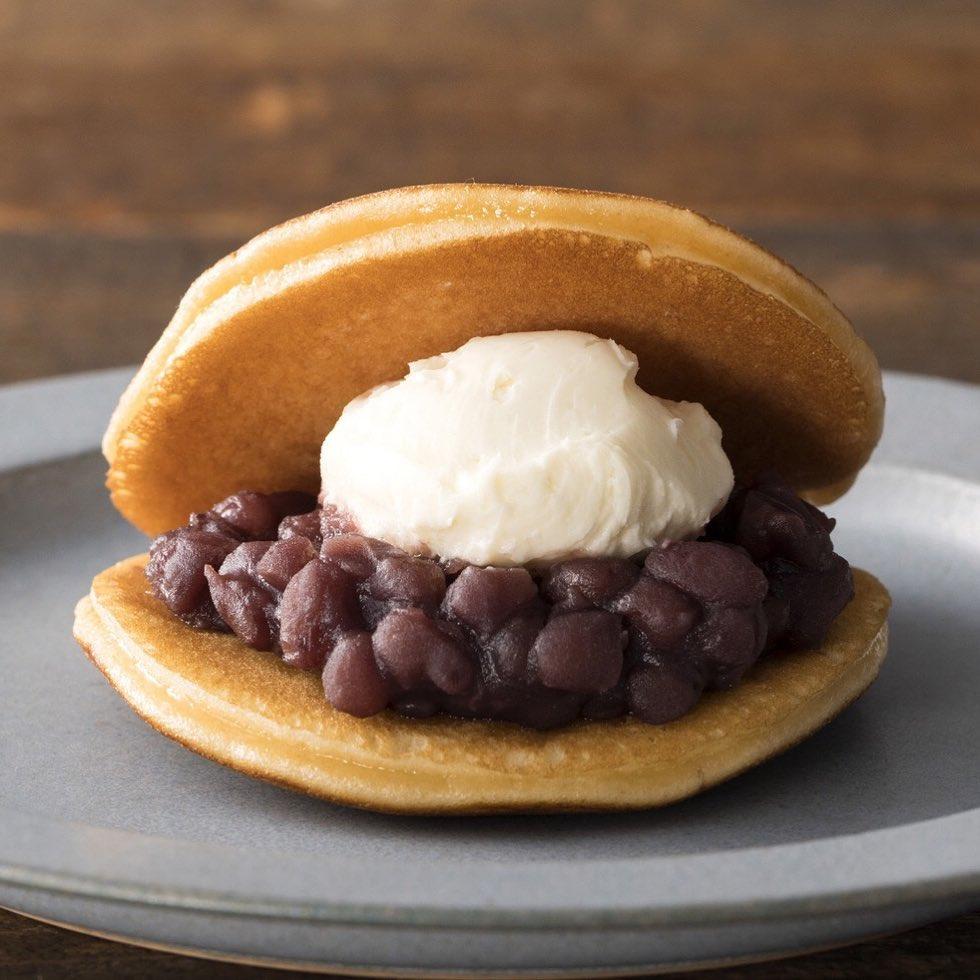
Image credit: @nakamata.jp
Best known as Doraemon’s favourite food, the dorayaki is familiar to those who grew up watching Japan’s beloved robot cat from the future. For the uninitiated, dorayaki (どら焼き) is a delicious sandwich made with honey pancakes and filled with anko.
Serves 6
Ingredients:
- 4 large eggs
- 140g (⅔ cup) sugar
- 2 tbsp honey
- 160g (1⅓ cup) all-purpose flour
- 1 tsp baking powder
- 1 tbsp water
- 1 tsp vegetable oil
- 520g anko
Steps:
- Whisk the honey, eggs, and sugar in a bowl until the mixture becomes fluffy.
- Sift flour and baking powder into the bowl and mix all together. Keep in the fridge to rest for 15 minutes.
- When the mixture is smooth, stir in 1 tbsp of water.
- Heat a large non-stick frying pan over medium-low heat. Dip a paper towel in vegetable oil and coat the bottom of the pan with the oil, before removing the oil completely with another paper towel. This is the key to an evenly golden-brown dorayaki.
- With a ladle or a small measuring cup, pour 3 tbsp of the batter to create pancakes of ~8cm in diameter.
- When the surface of the batter starts to bubble, flip it over and cook the other side.
- Transfer to a plate and cover with a damp towel to prevent it from drying out.
- Continue making pancakes.
- Sandwich anko in between 2 pancakes and put more red bean paste in the centre so the shape of dorayaki will be curved – the middle should be thicker. Wrap dorayaki with plastic wrap, or individually in ziplock bags, until ready to serve.
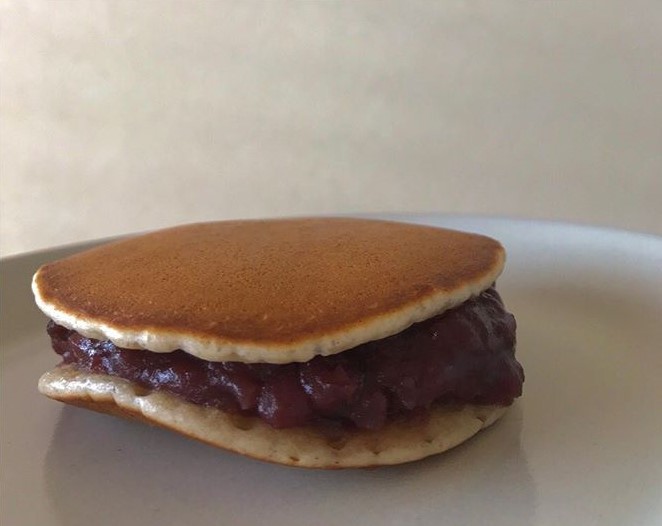
Image adapted from: @hitominomii
While the most popular filling is anko, don’t let that restrict you. Get creative with dorayaki fillings – try it with custard, ice cream, or even Nutella.
Check out the original recipe:
9. Japanese Strawberry Shortcake
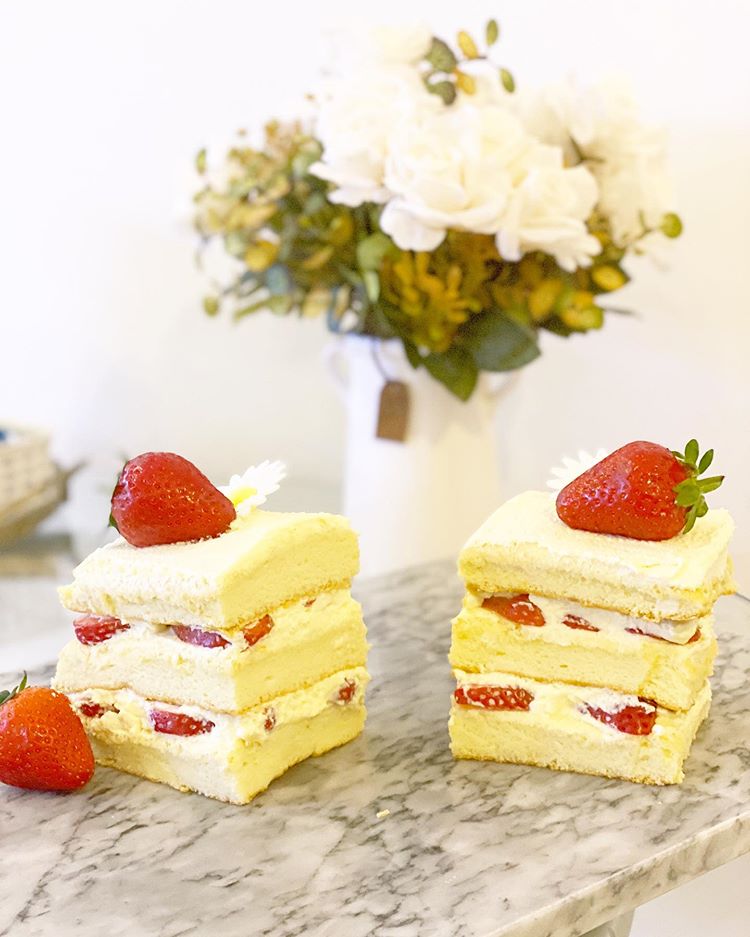
Image credit: @baked.by.kai
The Japanese strawberry shortcake is made with layers of soft and airy sponge cake, whipped cream, and strawberry slices. It’s a simple dessert that certainly packs a delicious punch.
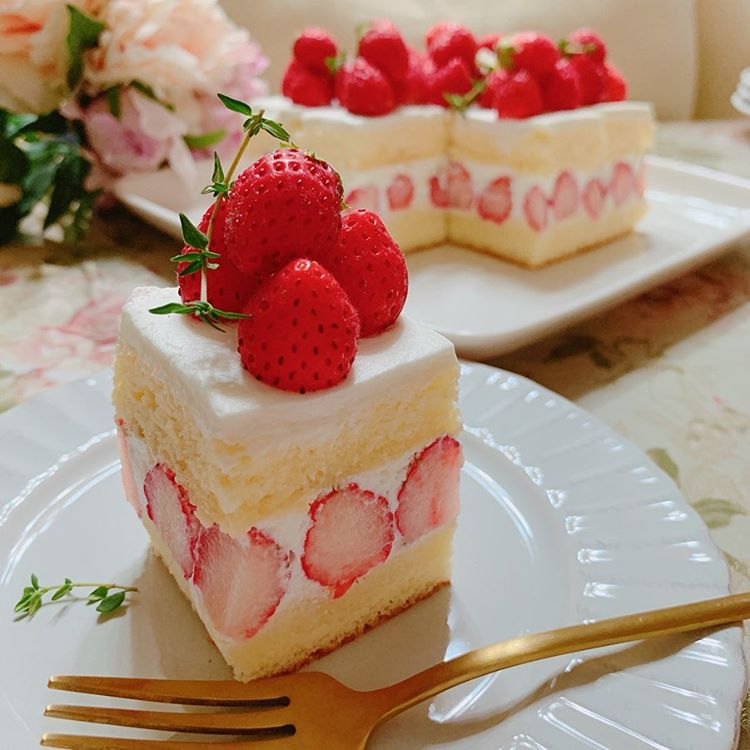
Image credit: @ao.ruri
Serves 4
Ingredients:
- 2 egg yolks
- 4 egg whites
- 120g of sugar (½ cup + 2 tbsp)
- 110 g of milk (7 tbsp)
- 45g of melted butter (3 tbsp)
- 120g of all-purpose flour (¾ cup + 1 tbsp)
- 1 tsp baking powder
- 1 tsp good vanilla extract
- 1 tsp lemon zest (optional)
- A pinch of salt
- Strawberries for the filling
- Whipped cream
Steps:
- Whisk the egg whites and lemon zest. Once they start to foam, gradually add the sugar in to form the meringue. Incorporate a lot of air to make the cake light and fluffy. Once the meringue has stiff peaks, set it aside.
- In a separate bowl, beat the egg yolk and vanilla extract before adding in the milk and melted butter.
- Once it’s properly mixed, mix in the flour until the dough has a uniform consistency and colour.
- Add a few dollops of the meringue into the mixture before incorporating the rest of the mixture into the meringue. This helps to make the process easier and also retain the air inside the batter.
- Pour the batter into 2 pans lined with butter and parchment paper, and even it out with a spatula.
- Bake the cakes in a preheated oven at 160℃ for around 20-22 minutes.
- Allow the cakes to cool for 5 minutes before removing them from the tray to cool completely.
- Coat the cake with a layer of whipped cream evenly before topping it with thinly-sliced strawberries. Again, cover the strawberries with another layer of whipped cream and stack on the second layer of cake over it. Finally, coat the top layer with whipped cream.
- Slice off the sides of the cake to reveal the strawberries and layers. Finish the cake by garnishing it with more strawberries.
Check out the original recipe here:
10. Matcha Mille Crêpe
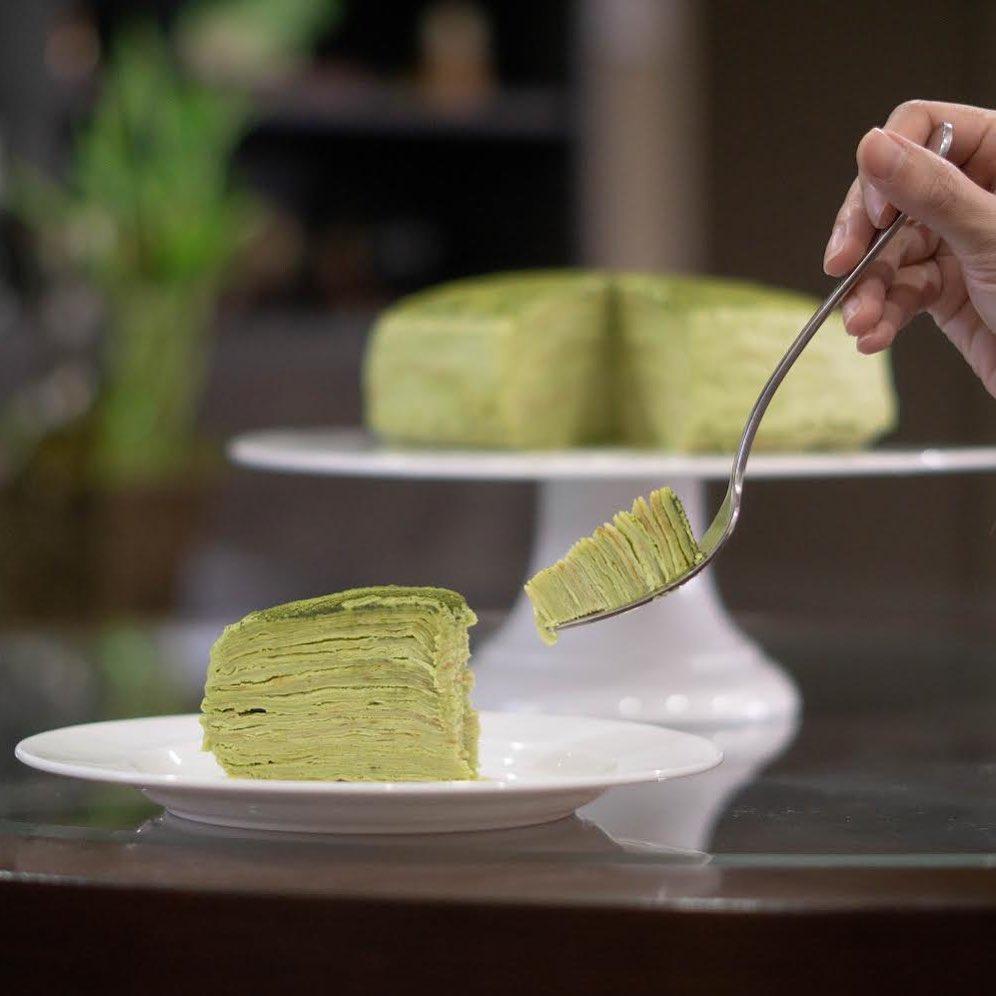
Image credit: @sweetsbyvivian
No Japanese dessert list is complete without at least one item with matcha in it. Mille Crêpe literally translates to a thousand crepes in French, referring to the many layers of crepes in the cake. It’s soft, chewy, and creamy – we’re sure you’ll love this very matcha.
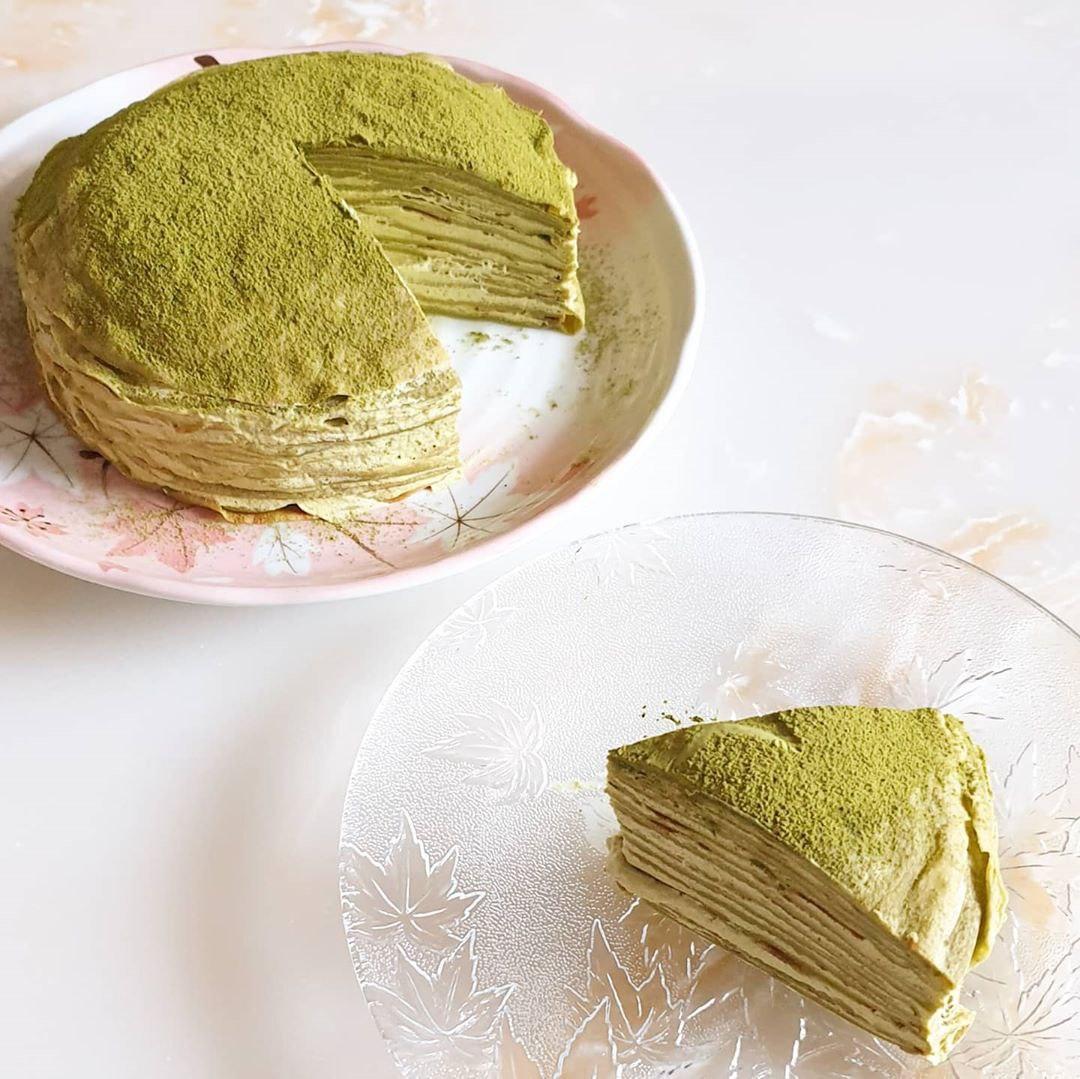
Image credit: @journalofnoms
Serves: 4-6 pax
Ingredients:
Crêpe
- 80g of all-purpose flour
- 1 tbsp matcha powder
- 2 tbsp granulated sugar
- A pinch of salt
- 2 eggs at room temperature
- 2 tbsp melted butter
- 160ml warm milk
- A few drops of vanilla extract (optional)
Matcha Cream
- 200ml whipping cream
- 2 tbsp granulated sugar
- 1 tbsp Matcha powder
Steps:
Matcha Cream
- Place whipping cream and granulated sugar in a dry clean bowl. Sift in matcha powder. Dip the base of the bowl in an ice-water bath, then whisk the cream until it forms a soft peak.
Crêpe
- Sift in the flour and matcha powder in a bowl. Add sugar and salt, then mix well with a wire whisk.
- Add beaten egg little by little and mix well.
- Add melted butter and mix well.
- Add warm milk little by little and mix well. Mix in a few drops vanilla extract if you like, and strain through a sieve. Then, cover with plastic wrap and leave the batter to stand at room temperature for 30 minutes.
- Use a non-stick pan or wipe the surface of a frying pan with a thin layer of cooking oil using a paper towel. Heat the pan on medium heat, pour half a ladle of the batter into the pan, and slowly move the pan in a circular motion to spread the batter evenly.
- Cook until the edges begin to dry, then flip it over and cook the other side for about 10 seconds.
- Leave them to cool completely.
To finish, place 1 crêpe on a plate, spread some matcha cream, then place another crêpe on top. Repeat until it reaches a height you like and finish it by dusting matcha powder on the cake.
Place the cake in the fridge for a few hours to let the cream set. Eat within the next day.
Check out the original recipe:
Simple Japanese desserts
When one thinks of Japanese cuisine, it’s rather common to overlook the desserts. That’s a real shame as Japanese desserts are some of the most delicious and aesthetically-pleasing ones out there. Hopefully, these easy recipes for Japanese desserts will satiate your sweet tooth until the next time you can fly to Japan again.
Check out these articles for more ideas on what to do at home:
- Japanese cocktails with supermarket ingredients
- Anime recipes to recreate IRL
- Horror anime series
- Free Japanese livestreams
- Japanese anime movies
Cover image adapted from (clockwise from left): @mon.origine, @chihiro_cafe.sweets and @igpppppppppp

Drop us your email so you won't miss the latest news.

















